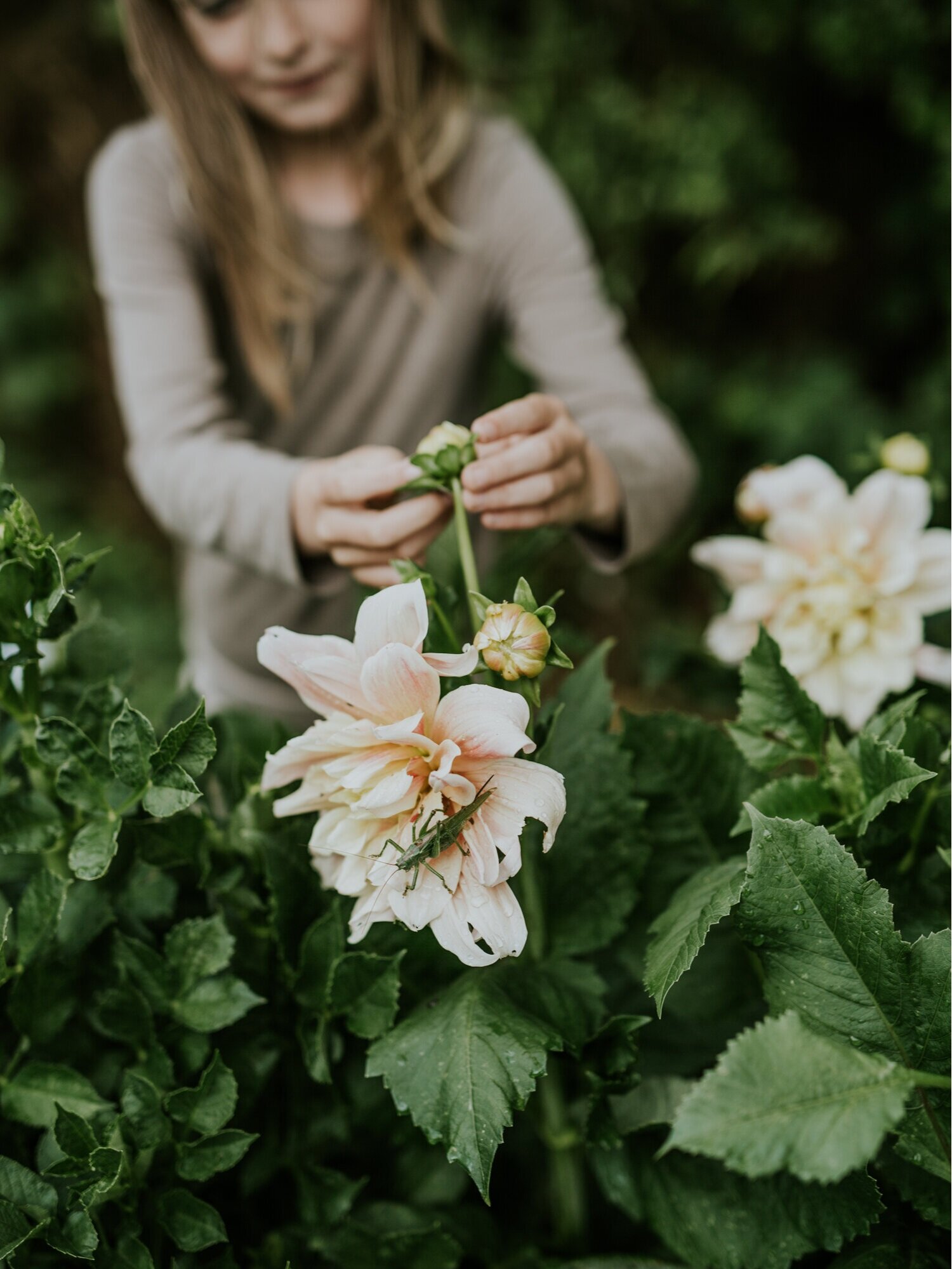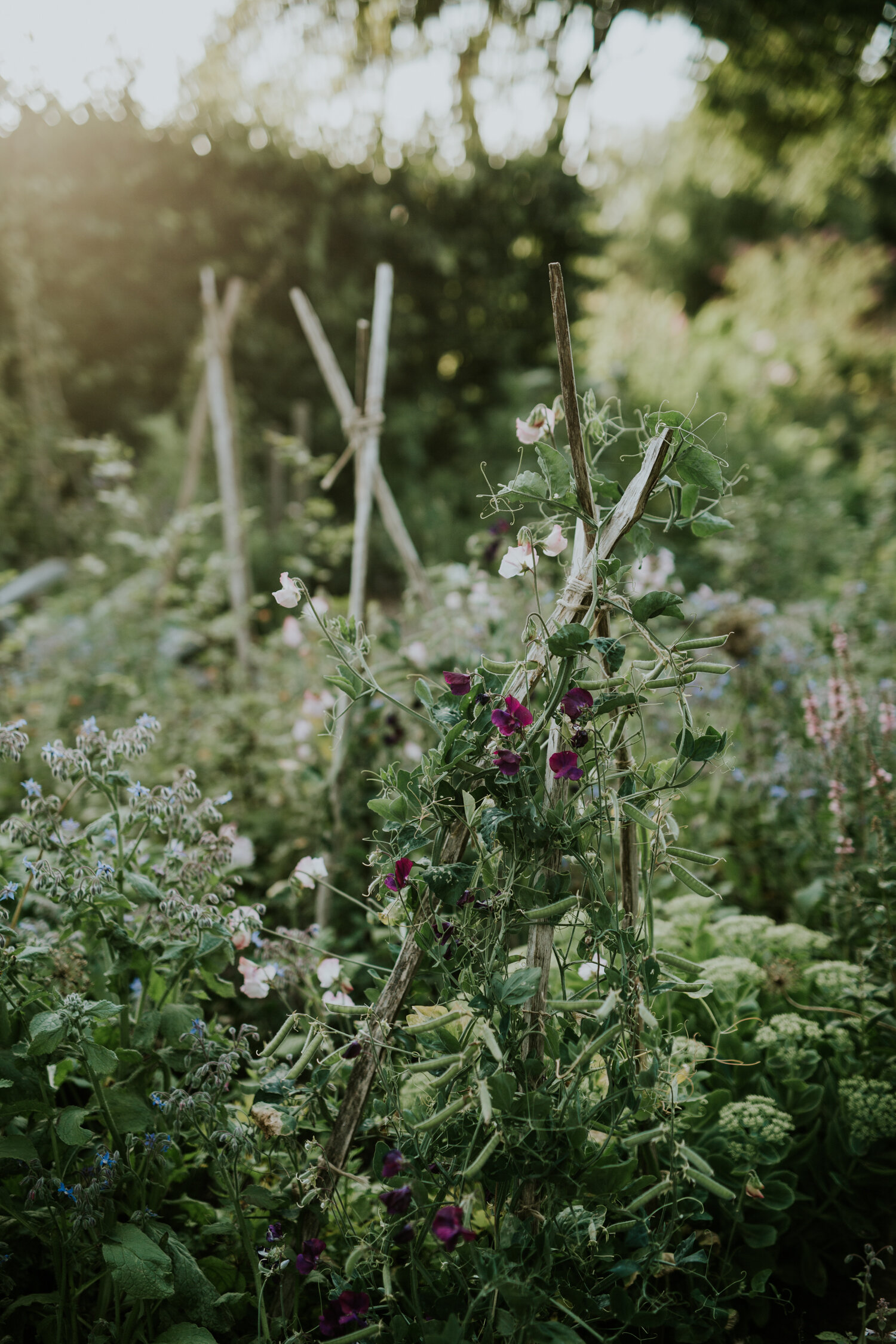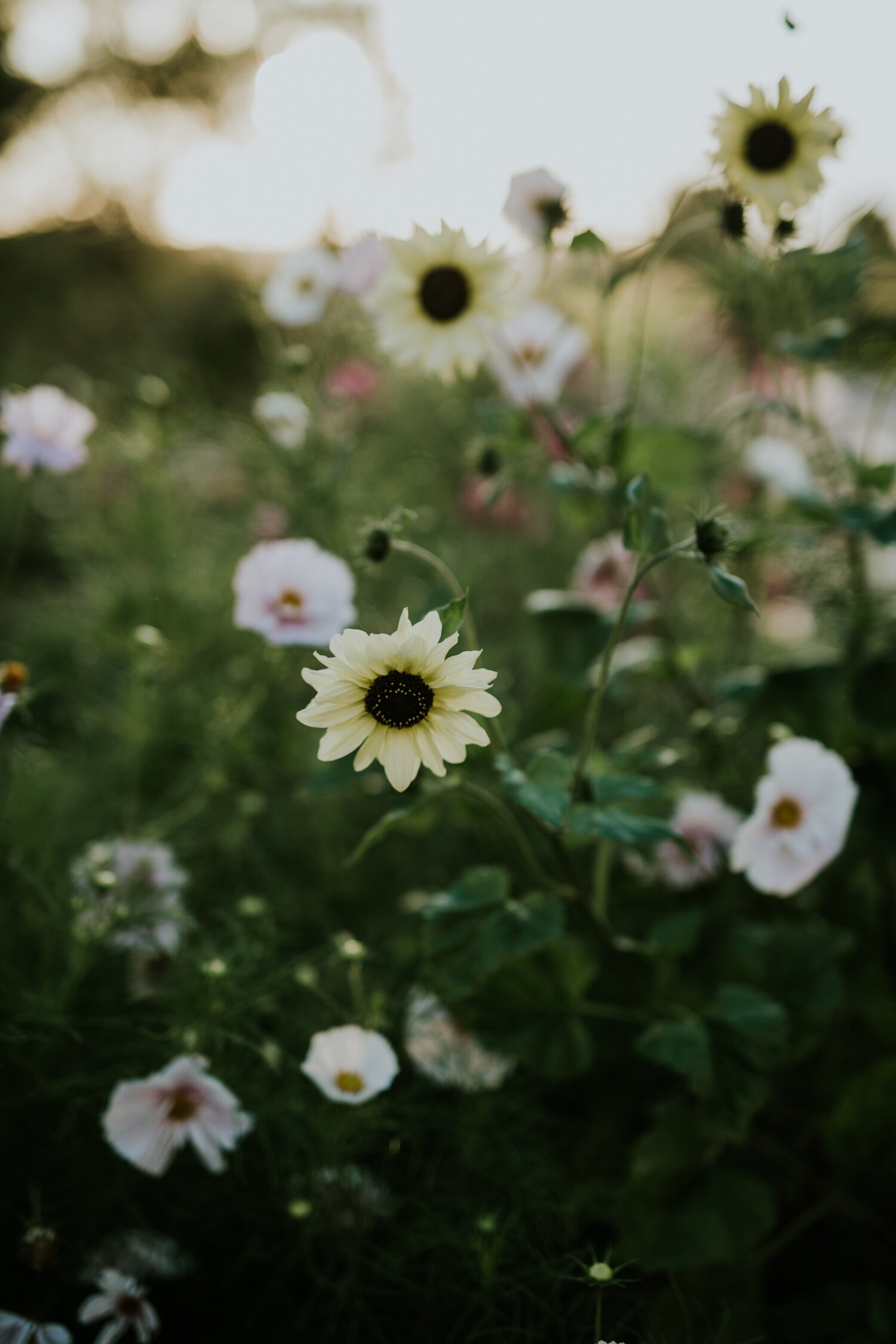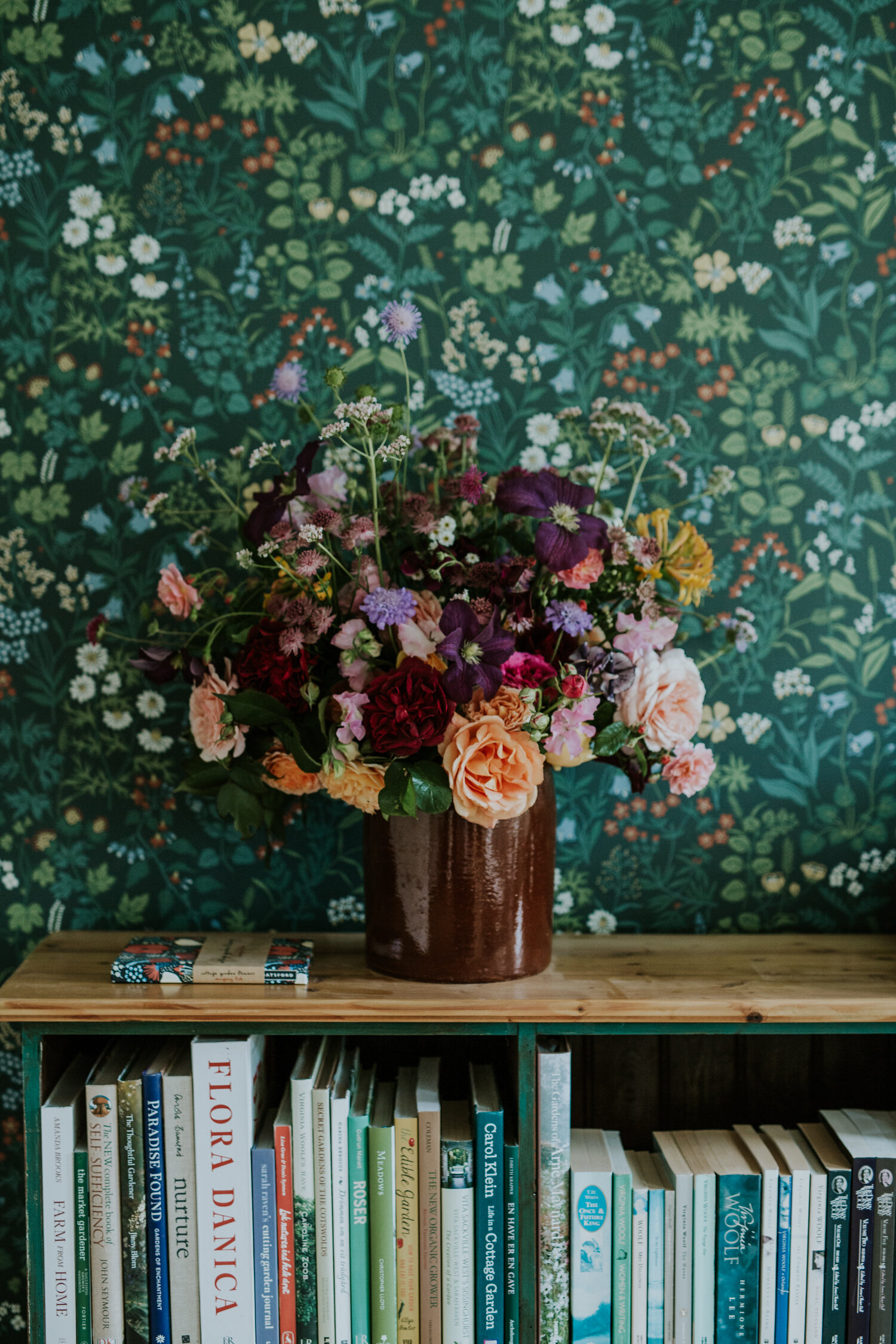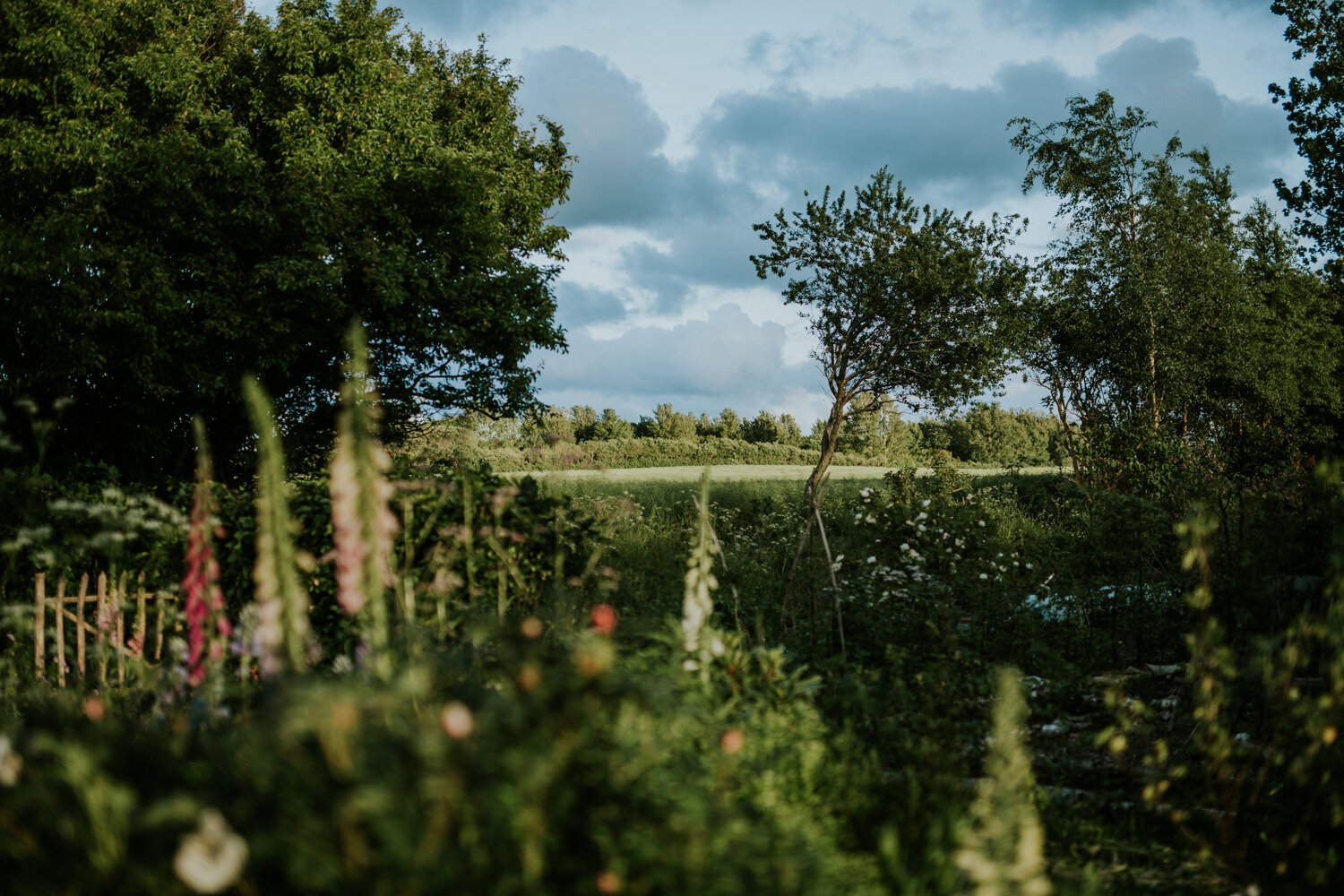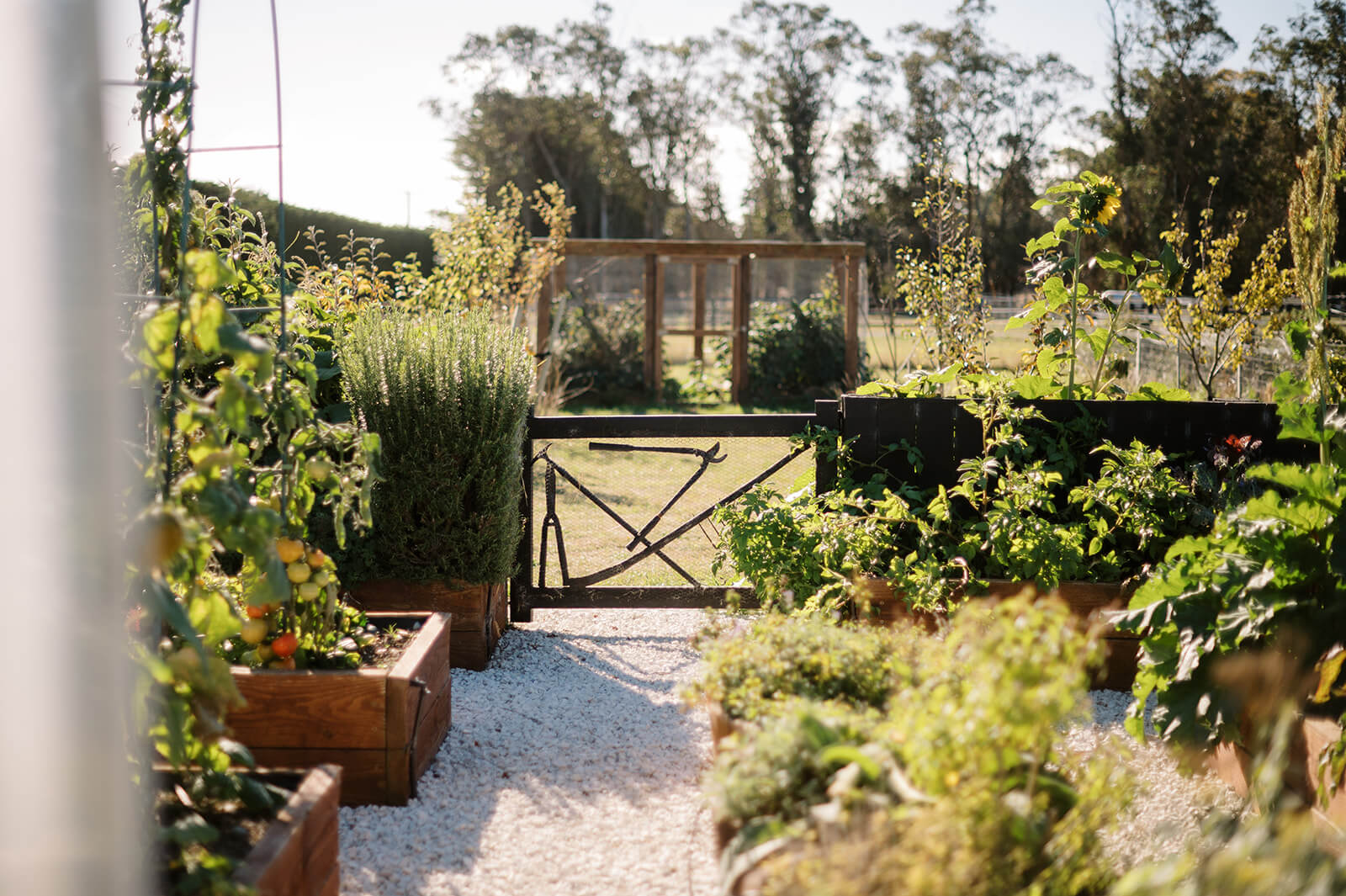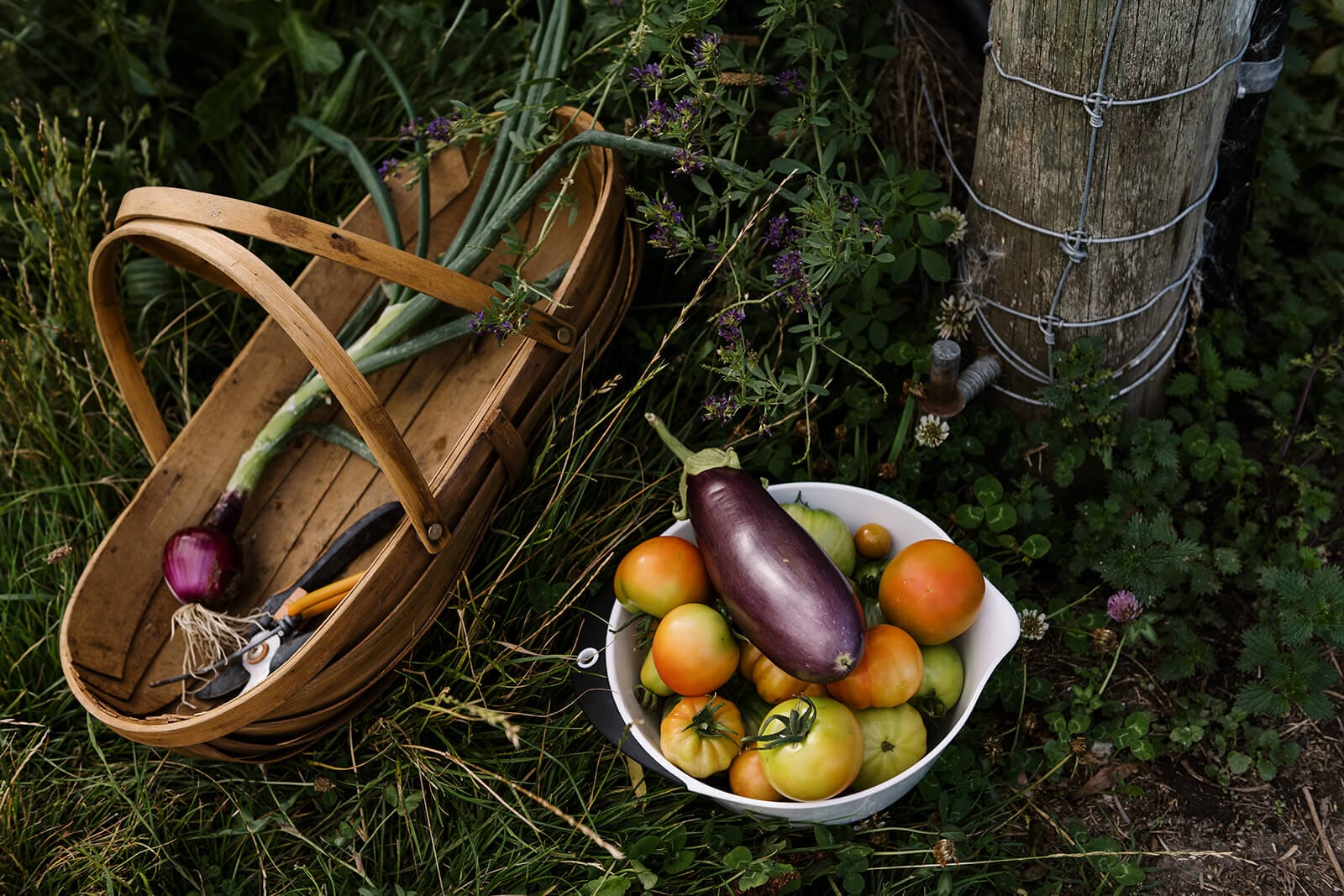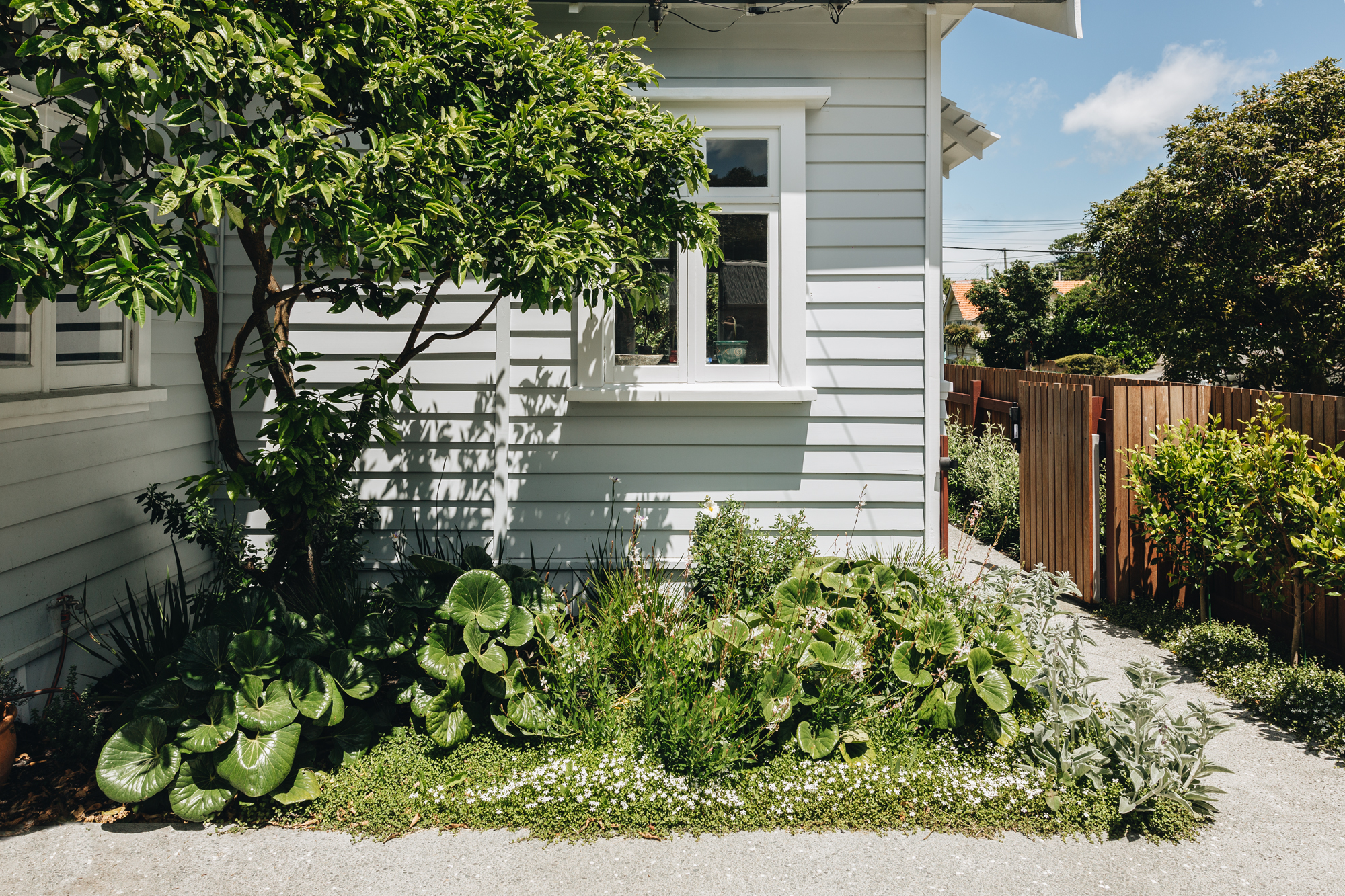Camilla Jørvad is a mother and self-taught photographer who is deeply in love with gardening. Her time tending to her land helps foster a close connection to nature and the changing seasons — something she identifies as crucial for her mental and physical wellbeing.
Camilla shares her tips and suggestions for creating a wild cottage garden, like the one she tends to at Sigridsminde – her family’s hobby farm on a small Danish island, Ærø.
Related reading: Chaos & Restoration — Camilla Jørvad
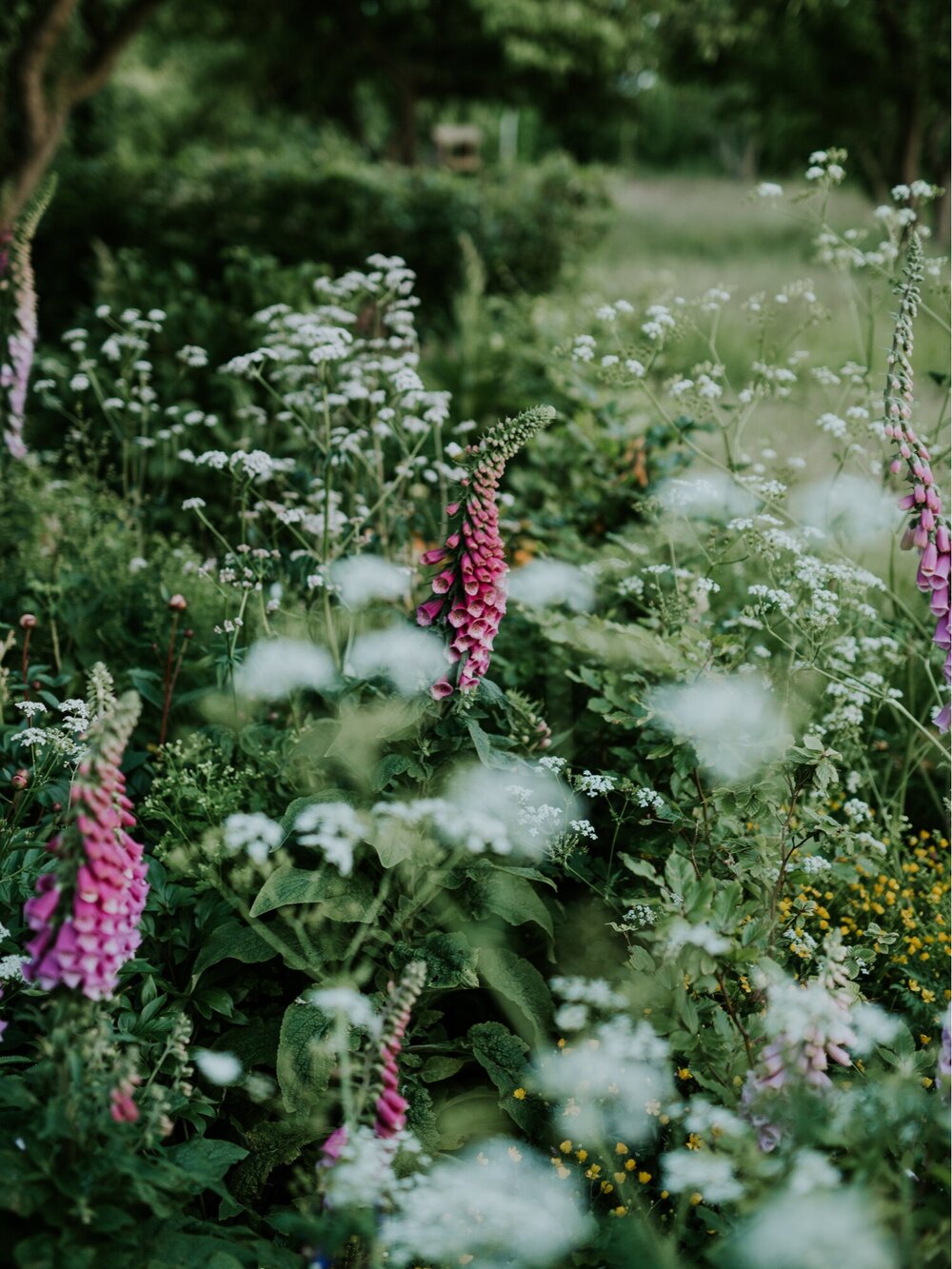
Camilla uses a mixture of trees and shrubs, perennials and annuals to create her ‘wild’ cottage garden.
Can you tell us about your impressive ‘cottage garden’ and journey in creating it from scratch?
It’s been a lot of work. My husband is not really interested in gardening so in the beginning I had to fight hard to allocate some of our money and a lot of our time to this project. But now, I think he understands what I saw all along! Most of what is now our ‘wild garden’ used to be a flat grazed field of grass. Now that we’re 10-11 years into the process, the bigger structures we planted at the beginning (trees, shrubs and hedges) are practically fully grown and are adding a whole new feeling of intimacy and maturity to the garden. Although I enjoy the pleasure of creating a new flower bed from scratch and seeing that it is already mature by the following growing season, I always knew that I was creating a garden that wouldn’t truly come to fruition until a few decades later. My grandfather’s garden, which is my biggest source of inspiration, was mature when I was a child and it had that magical lush rambling atmosphere that only an “old” garden has. What I’m really doing with my garden these years is creating the bones of it all, and at some point, when the plants I really want to be there are 100% established, I will take a step back and let things grow and unfold on their own. My dream garden is a garden where you can tell someone had a plan once and then it was left behind and nature came in and softened the “edges”, adding that special touch that only nature can.
Do you have any tips for people wanting to grow their own cottage garden?
-
While it may feel boring, try to focus on the big structural plants first. Get the slow growers: trees, shrubs, hedges, in the ground first.
-
Don’t overestimate what you can do in one season (you will end up stressed), and don’t underestimate what you can accomplish in 5 years.
-
Be patient with yourself and with your plants.
-
Experiment and ignore some of the “rules” of gardening.
What are your favourite plants and flowers to grow?
That is a tough question because my love is not so much about a plant as it is about the combination of plants. It is creating a living, breathing and ever changing painting – a picture. But in general I love combining the more traditional old cottage garden plants with wild flowers so I achieve that magical balance of human touch and nature’s touch. There are some plants that just speak to me more than others:
FOR STRUCTURE:
Apple or plum trees, buxus/box balls (evergreen and dense through the seasons) and lilac shrubs.
IN THE VEGGIE GARDEN:
The plants that produce the most for minimum effort are: Squash, strawberries, tomatoes and kale. And the vigorous, multi-purpose and best smelling herb in the world: Mint. Also the flowering perennial companion: Nasturtium ‘Milk Maid’ and ‘Ladybird Rose’.
“My dream garden is a garden where you can tell someone had a plan once and then it was left behind and nature came in and softened the “edges”, adding that special touch that only nature can.”
“WILD” FLOWERS:
PERENNIALS: Foxgloves (a must!); Scabiosa Caucasica (pincushion-flower); Echinacea ‘Magnus’ or ‘White Swan’; Geranium ‘Rozanne’; Achillea ‘Terracotta’.
ANNUALS: Poppies (‘Mother of Pearl’ mix); Calendula ‘Bronze Beauty’; Verbena bonariensis.
CLIMBERS: Clematis ‘Hagley Hybrid’ or if you have the space a ‘Montana’ variety.
UMBELLIFERS: As many as you get your hands on – Cow parsley; Queen Anne’s lace; Dill and Fennel.
CUT FLOWERS:
Cosmos; dahlias; sweet peas; sun flowers (red and white).
ROSES: A healthy open single rose like ‘Nevada,’ or a true wild rose like ‘Complicata‘. ‘Crown Princess Margareta‘ and other David Austin Roses are truly incredible (but so dense that they are almost useless to pollinators).
“And of course, best of all, is if you mix all of the above – nourishment for both wildlife and human spirit and body – in one big jumble. That is a true wild cottage garden to me.”
What would you say to encourage someone who is starting on a gardening journey?
Be patient and accept from the beginning that you will never be done learning, and your garden will never be “finished”. It is the joy of doing the work that matters, not the finished product.
INTERVIEW: Emma Sage
PHOTOGRAPHY: Camilla Jørvad

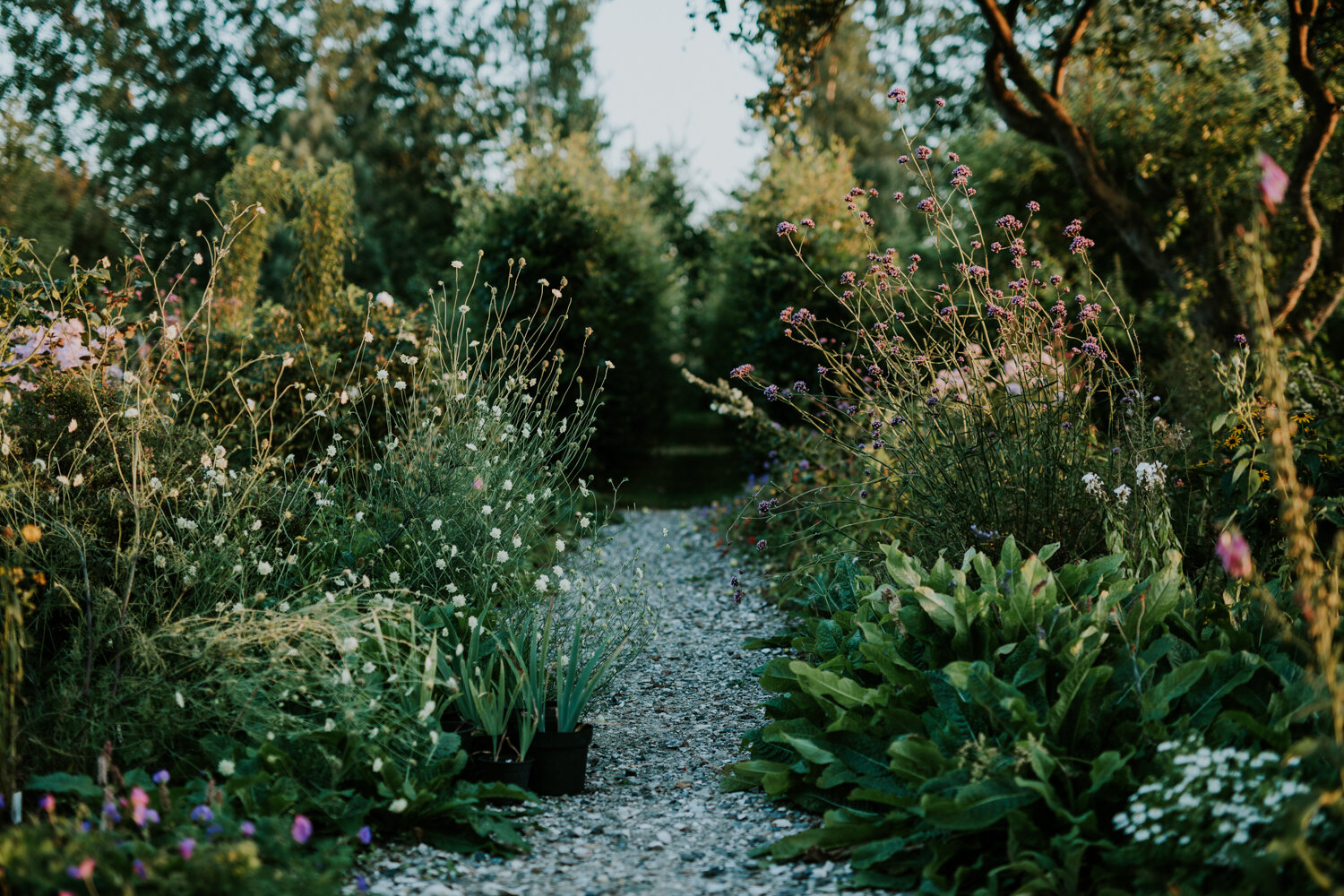

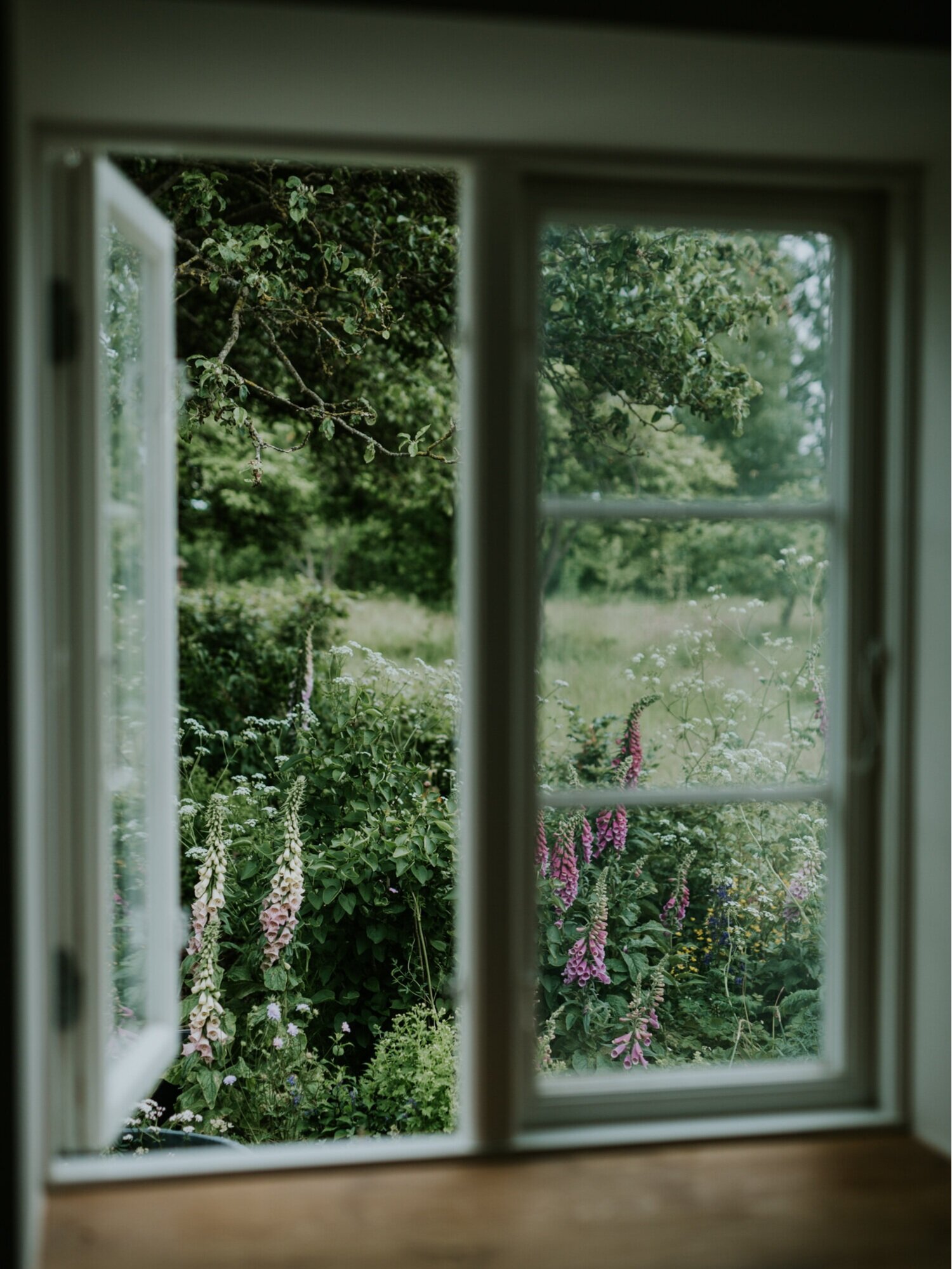
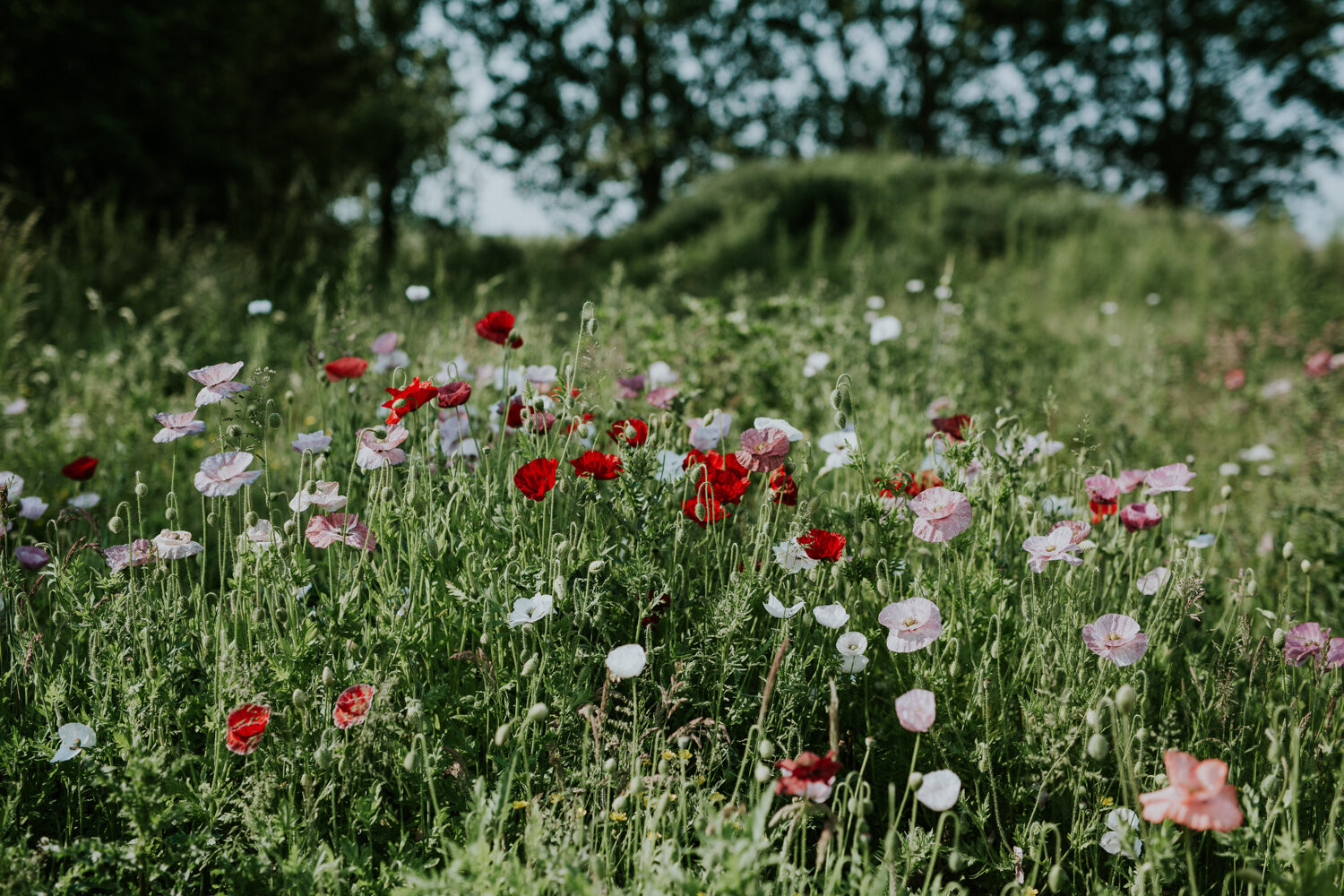
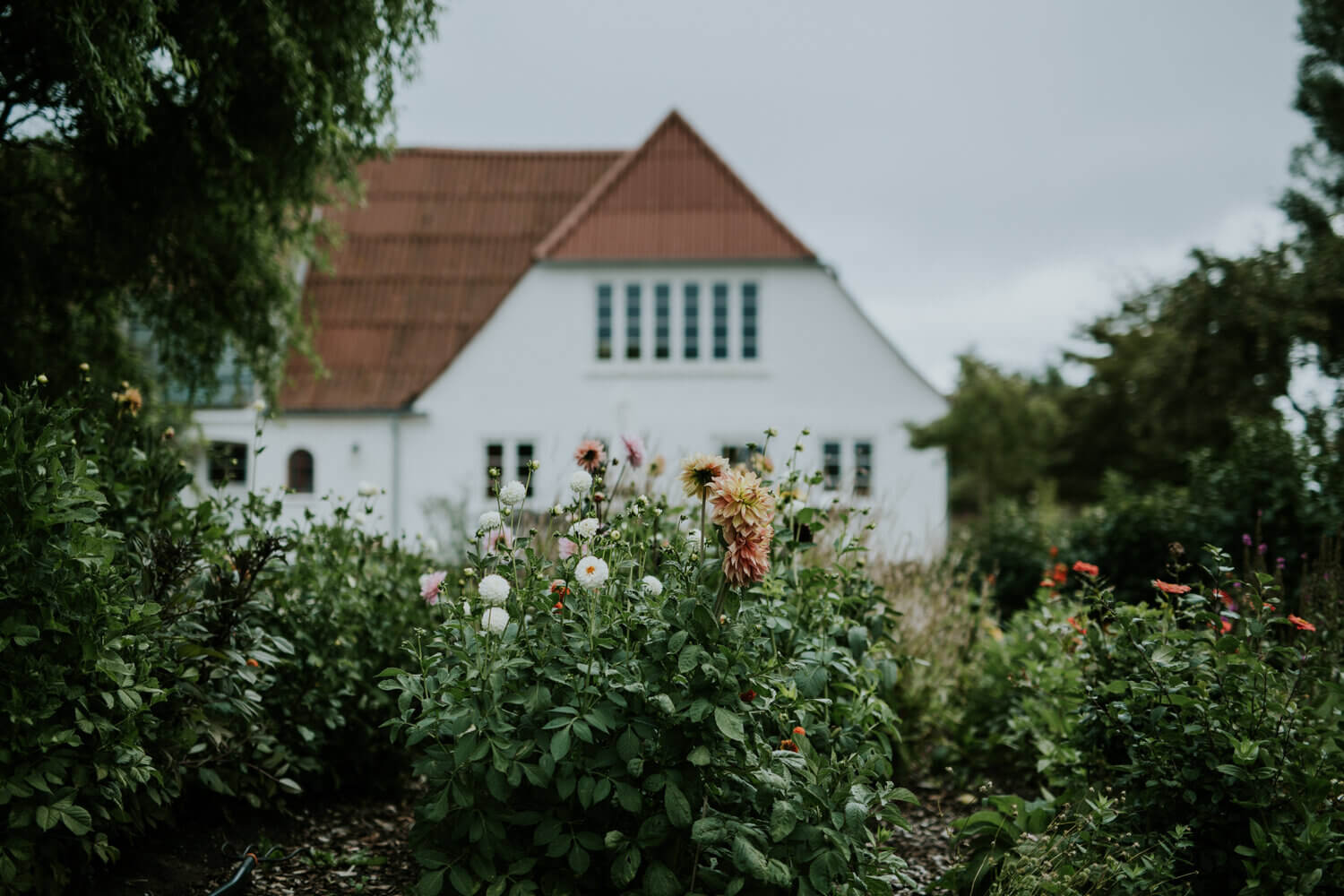
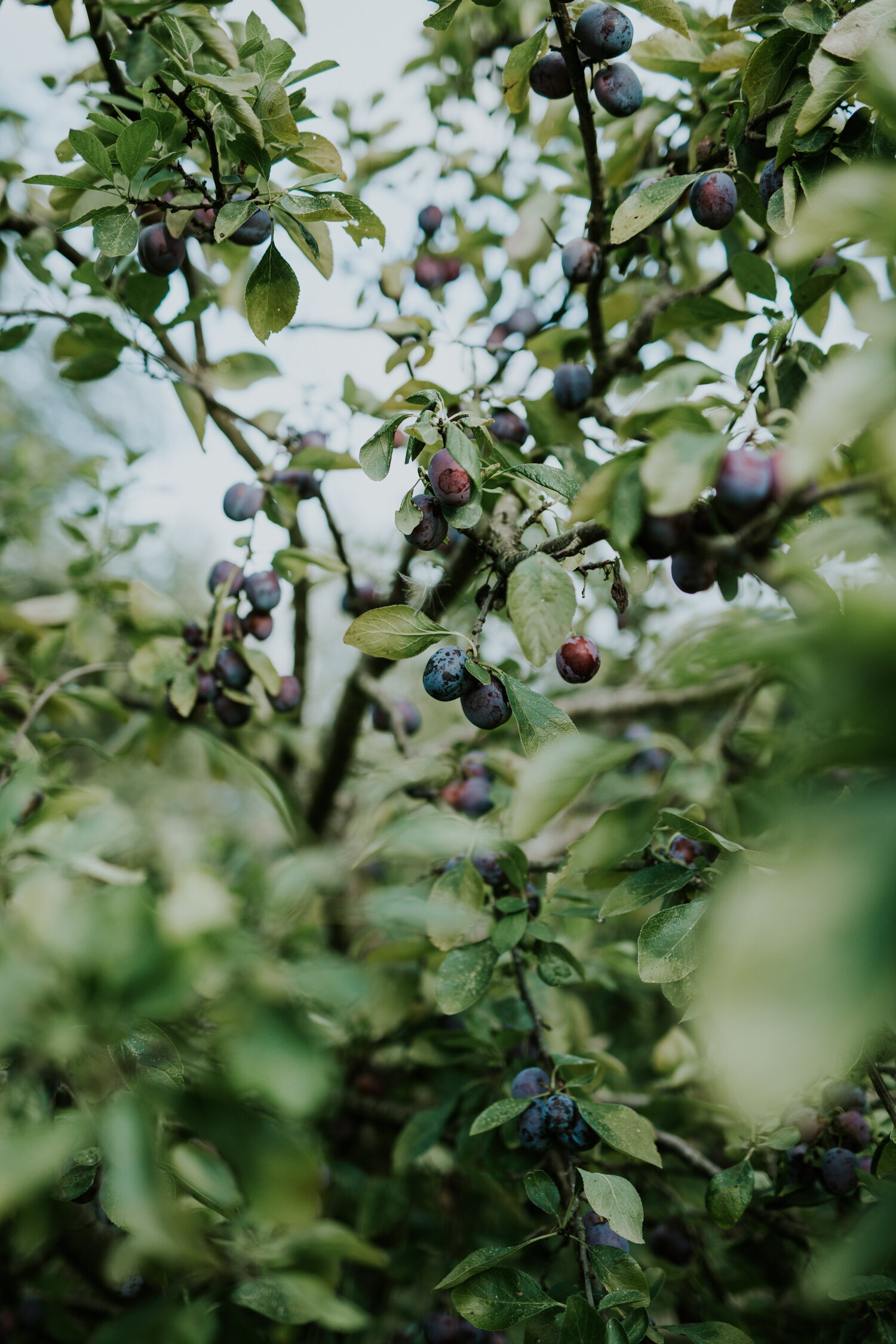
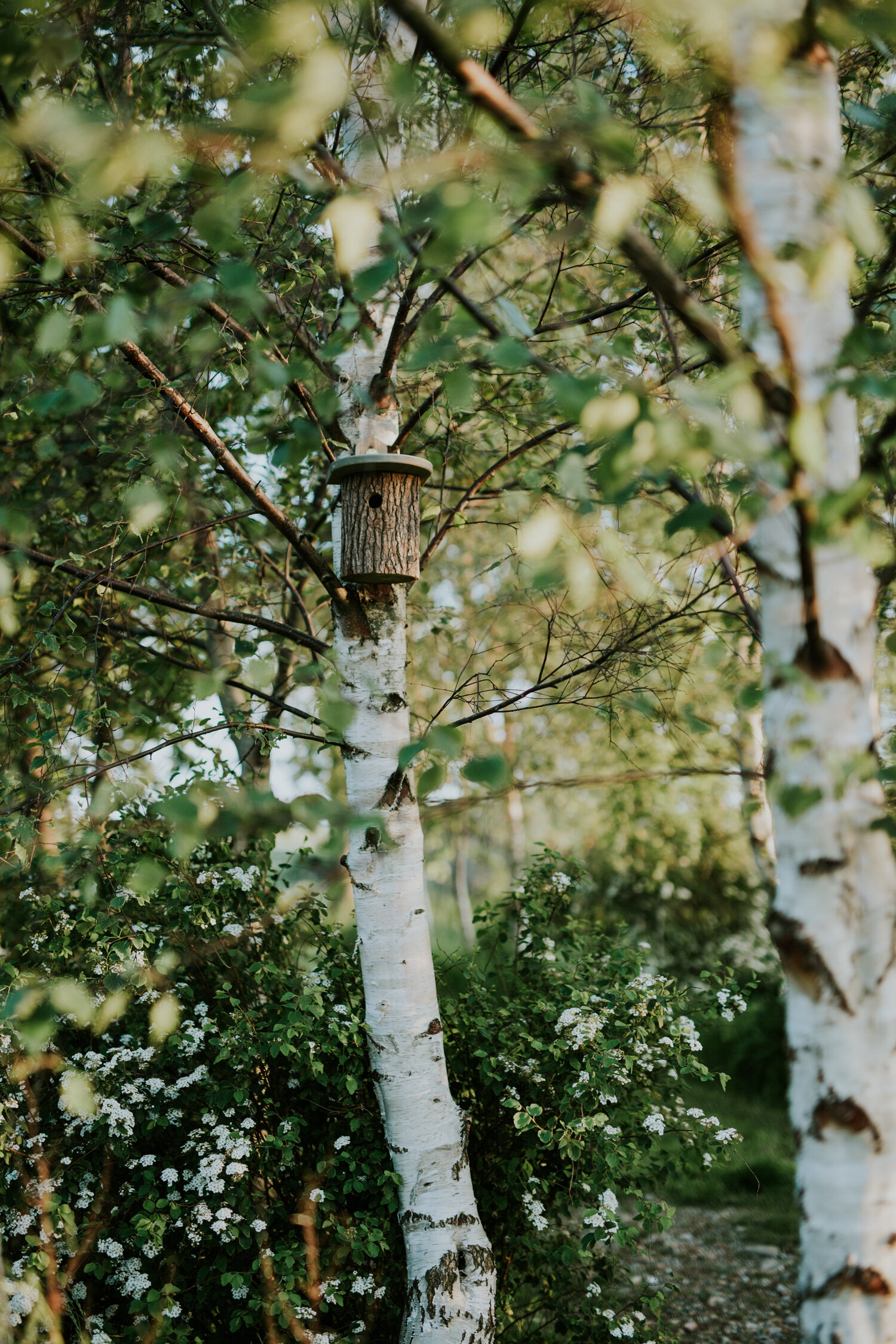
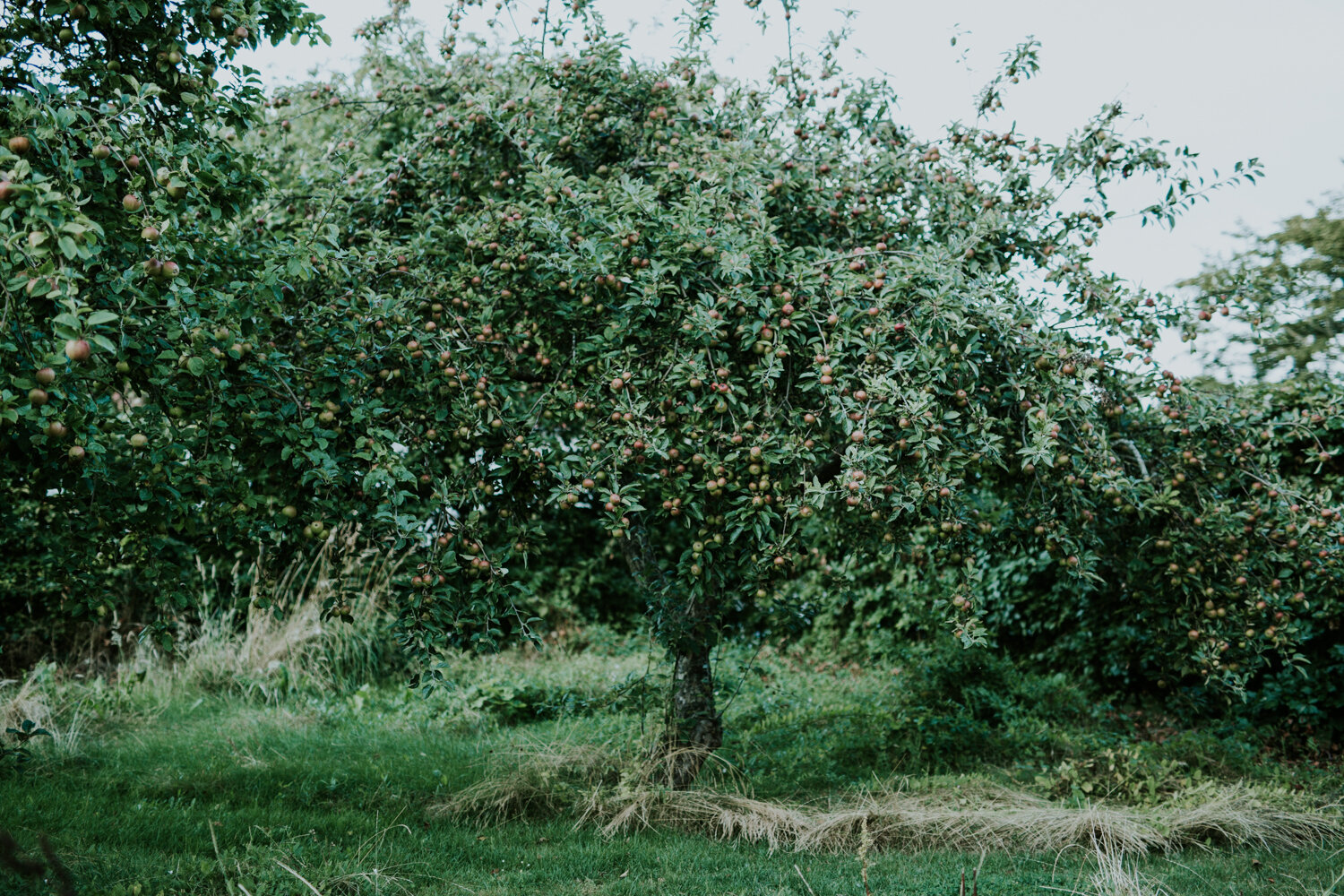
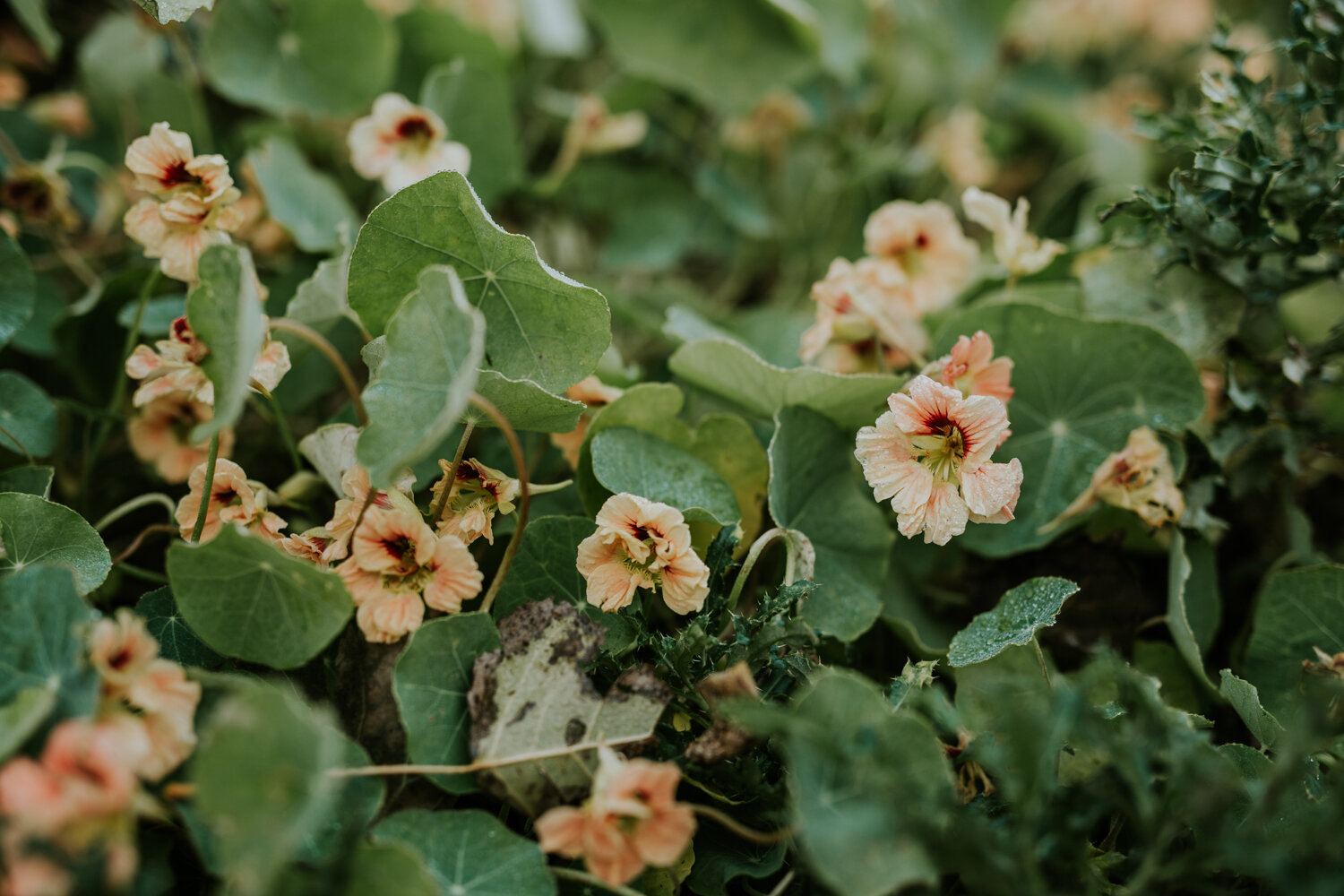
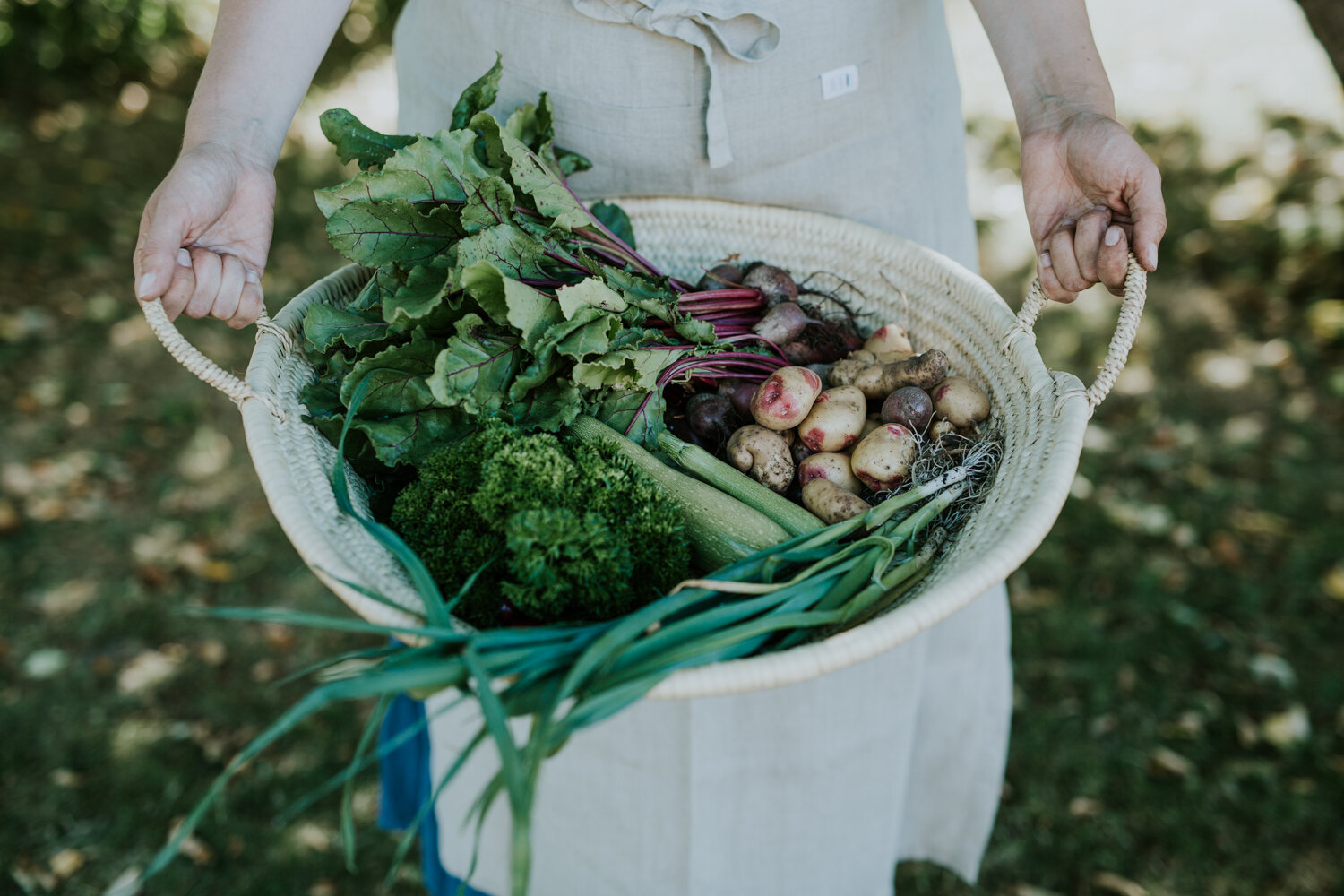
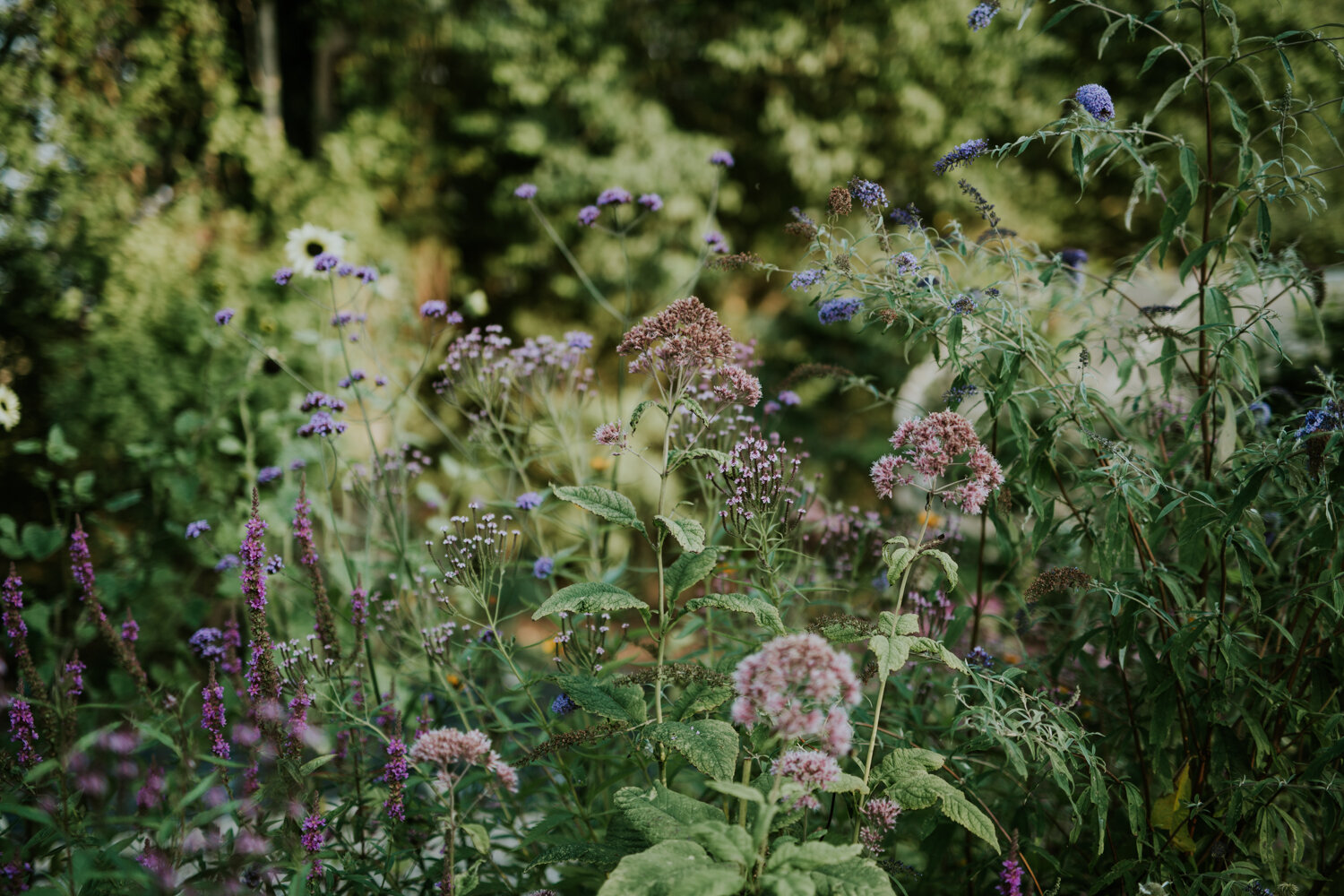
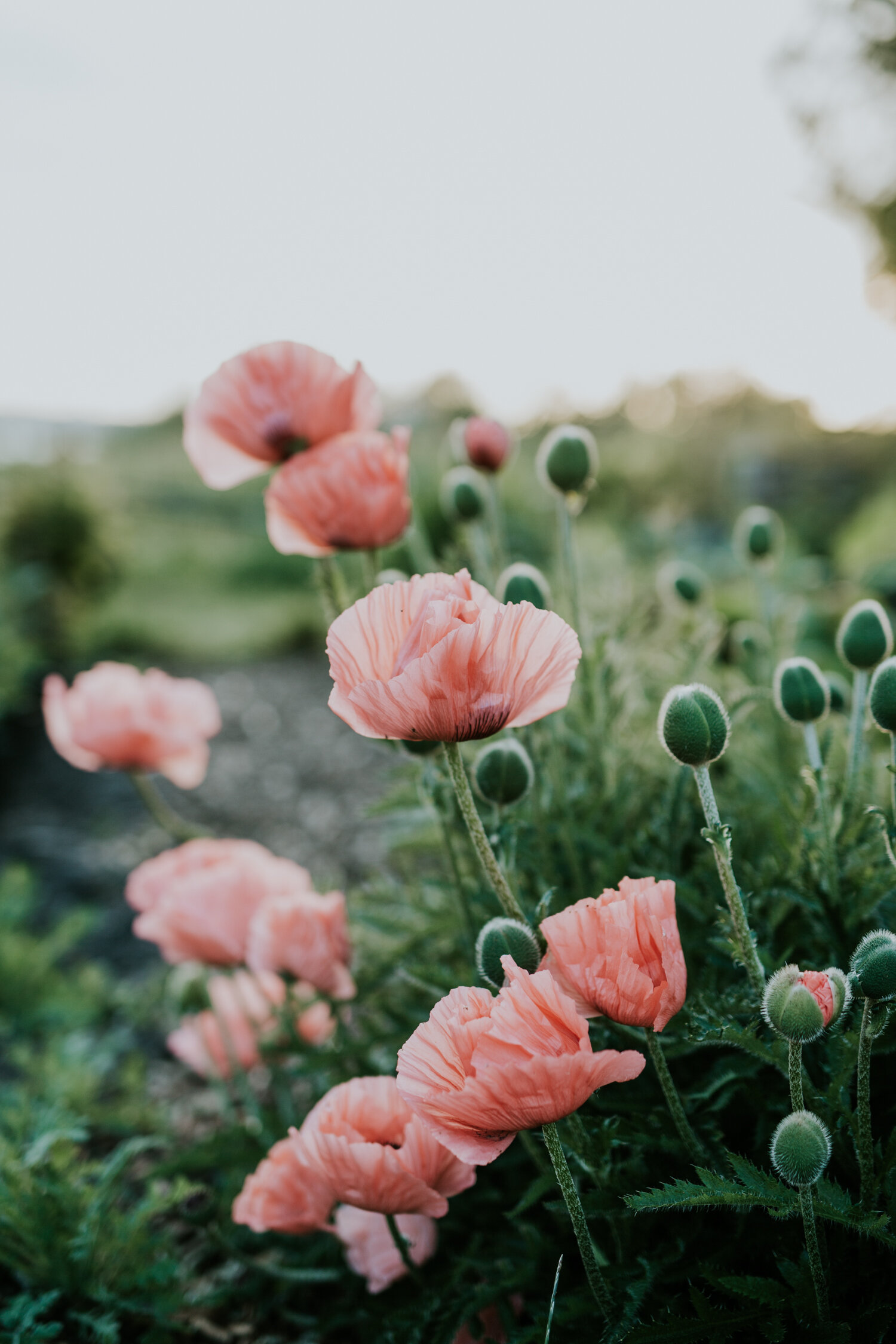
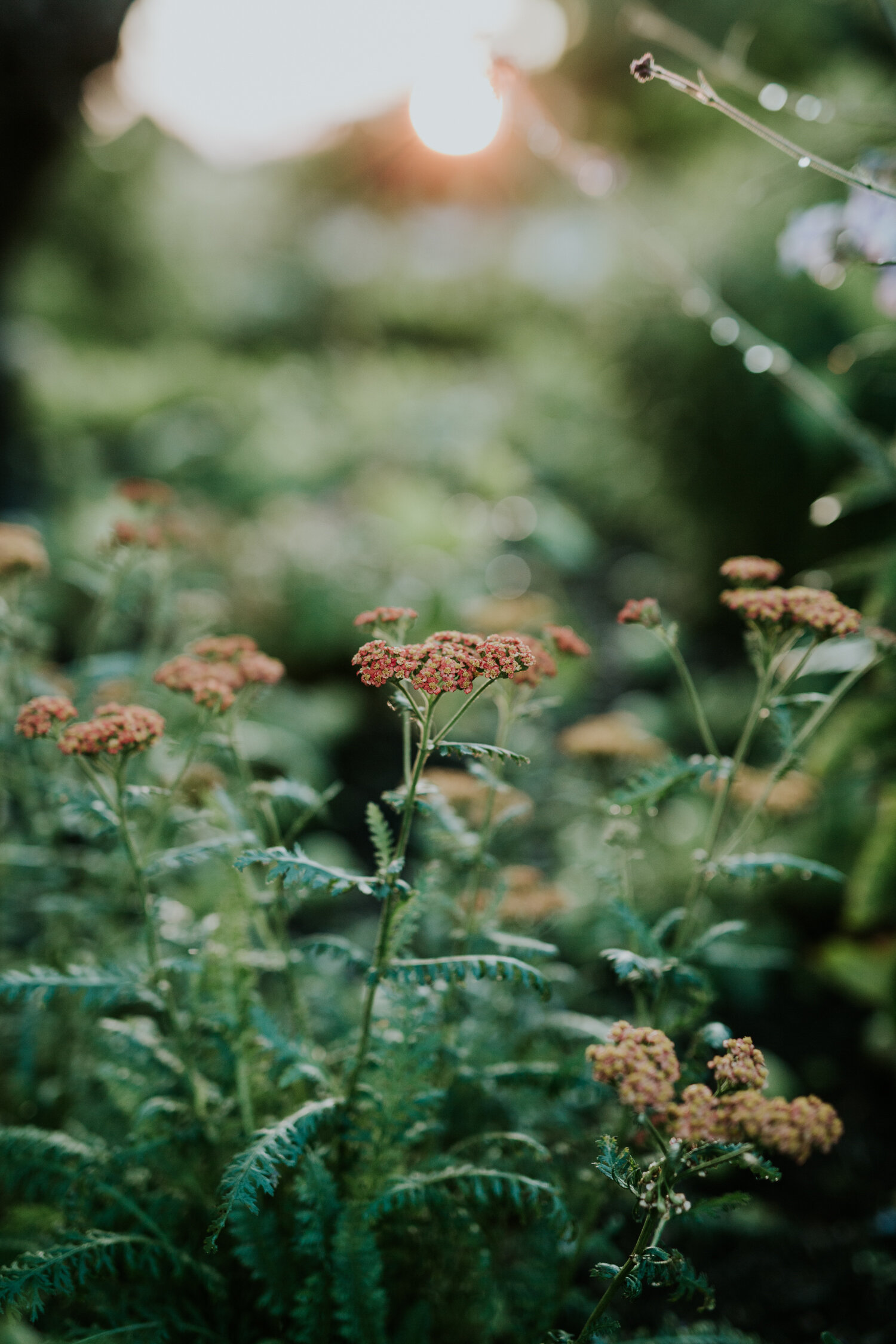
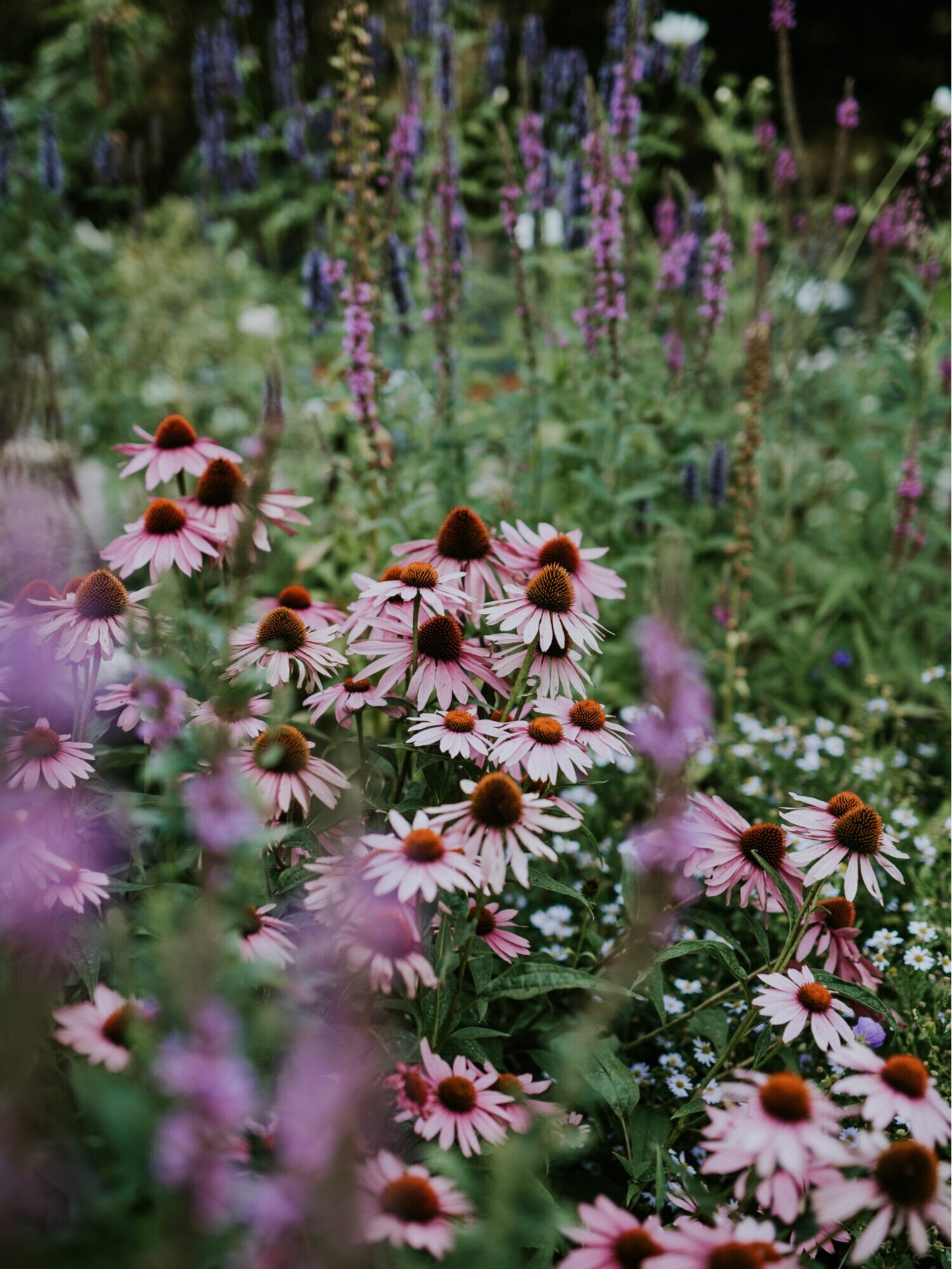 Echinacea ‘Magnus’
Echinacea ‘Magnus’